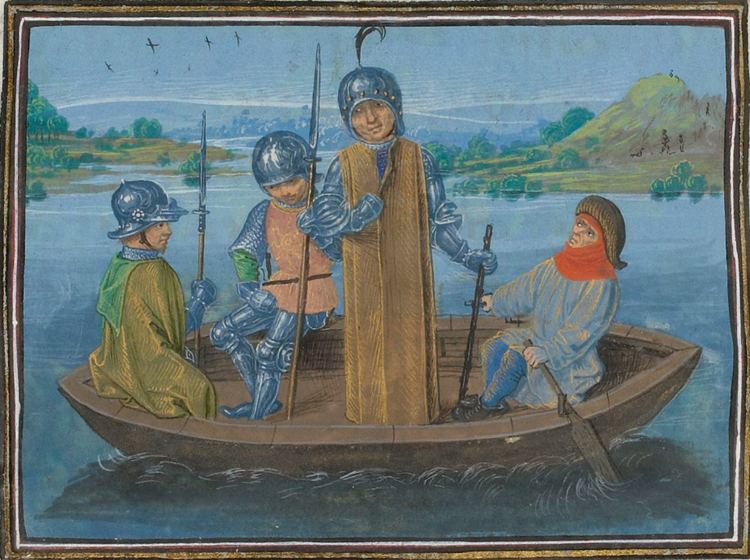Noble family De Vere Mother Maud de Ufford | Name Robert Vere, Role Earl of Oxford | |
 | ||
Spouse(s) Philippa de Coucy
Agnes de Launcekrona Father Thomas de Vere, 8th Earl of Oxford Died November 22, 1392, Leuven, Belgium Parents Thomas de Vere, 8th Earl of Oxford, Maud de Ufford, Countess of Oxford Cousins Richard de Vere, 11th Earl of Oxford Grandparents John de Vere, 7th Earl of Oxford Uncles Aubrey de Vere, 10th Earl of Oxford Great-grandparents Margaret de Clare, Baroness Badlesmere | ||
Robert de Vere, Duke of Ireland, Marquess of Dublin, and 9th Earl of Oxford KG (16 January 1362 – 22 November 1392) was a favourite and court companion of King Richard II of England. He was the ninth Earl of Oxford and the first and only Duke of Ireland and Marquess of Dublin.
Contents
Early life
Robert de Vere was the only son of Thomas de Vere, 8th Earl of Oxford and Maud de Ufford. He succeeded his father as 9th Earl in 1371, and was created Marquess of Dublin in 1385. The next year he was created Duke of Ireland. He was thus the first marquess, and only the second non-princely duke (after Henry of Grosmont, 1st Duke of Lancaster in 1337), in England. King Richard's close friendship to de Vere was disagreeable to the political establishment. This displeasure was exacerbated by the earl's elevation to the new title of Duke of Ireland in 1386. His relationship with King Richard was very close and rumored by Thomas Walsingham to be homosexual.
Robert, Duke of Ireland, was married to Philippa de Coucy, the King's first cousin (her mother, Isabella, was the sister of the King's father, Edward, the Black Prince and the eldest daughter of Edward III). Robert had an affair with Agnes de Launcekrona, a Czech lady-in-waiting of Richard's Queen, Anne of Bohemia. In 1387, the couple were separated and eventually divorced; Robert took Launcekrona as his second wife.
Downfall
Since Robert was hugely unpopular with the other nobles and magnates, his close relationship with King Richard was one of the catalysts for the emergence of an organised opposition to Richard's rule in the form of the Lords Appellant.
In 1387, Ireland led Richard's forces to defeat at Radcot Bridge outside Oxford, against the forces of the Lords Appellant. He fled the field and his forces were left leaderless and compelled into ignominious surrender.
He was attainted and sentenced to death in absentia by the Merciless Parliament of 1388, which also made him forfeit his titles and lands. People associated with him were also affected, for the parliament also dismissed his Irish Administration, composed of John Stanley, his deputy, who had been serving as Lord Lieutenant of Ireland, James Butler, 3rd Earl of Ormond, the governor, Bishop Alexander de Balscot of Meath, Lord Chancellor of Ireland, and Sir Robert Crull, Lord High Treasurer of Ireland. Fortuitously for him, he had already fled abroad into exile directly after Radcot Bridge.
Death
He died in or near Louvain in 1392. Three years later, on the anniversary of his death, 22 November 1395, Richard II had his embalmed body brought back to England for burial. It was recorded by the chronicler Thomas Walsingham that many magnates did not attend the re-burial ceremony because they 'had not yet digested their hatred' of him. The king had the coffin opened to kiss his lost friend's hand and to gaze on his face one last time.
Succession
After Ireland's death, his uncle Sir Aubrey de Vere, was restored to the family titles and estates, becoming 10th Earl of Oxford. The Dukedom of Ireland and Marquessate of Dublin became extinct.
